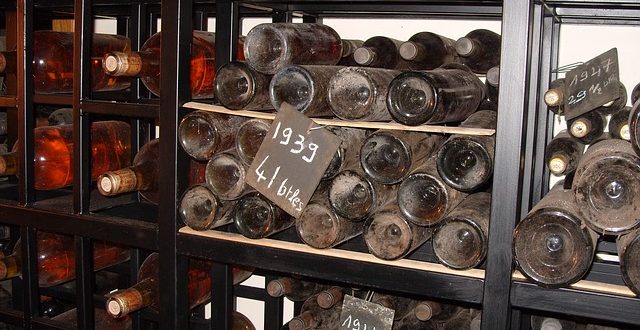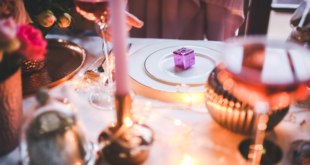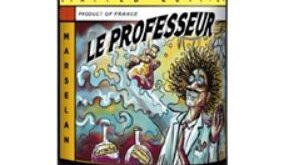Most of us consume the wine we buy pretty soon after we have purchased it. But, wine collecting, both to enjoy more at a latter date having been ‘laid down’ for a while or as ‘investment’ that is hoped will yield a handsome return at some point in the future, is becoming increasingly popular in the UK.
As a general rule, reds keep longer than whites. The flavours will become softened and will change with time due to the chemical reaction taking place within the bottle. This sometimes is caused or helped by seepage through the cork allowing fractional amounts of oxygen to get into the wine. The greater the air space between the cork and the top of the wine, know as the ullage, chemical reaction will change, if only slightly, the wine’s flavour.
Too much oxygen getting in because the cork has dried out and shrunk will deteriorate the wine rapidly. Great vintages are sometimes re-corked after a length of time. Plastic corks and even screw caps are now being widely used, as it is claimed, give a better and longer seal, and leave a fresher flavour without any additional background ‘tang” as cork sometimes give.
One of the most important things to consider is where are going to keep your wine? How your wine is stored will affect the taste and value of it later down the line. If looked after correctly, the wine will age nicely and will turn into vintage wine. So, where are you going to store your wine?
Making a wine cellar
The ideal place for a wine cellar is underground, in your basement, however, this isn’t always possible. If you have a large house or a spare room then it is certainly possible to build a cellar above ground. A good size cellar would be 3 x 3 meters. You’ll need to insulate the walls. If your basement is going to act as the cellar then you will need to see about a vapour barrier and concrete sealant for the flooring.
The door on you wine cellar needs to be solid and have enough insulation. A wooden door or a door with a window is not suitable because it does not provide enough insulation.
Equiping your cellar
A cooling system will also need to be put in place, with the option of two main types; the standard and split. Standard systems are very popular as they cost less and are easy to install, however, be aware that you will have to replace it in about 5 year’s time. Split systems cost more and need to be fitted by a professional, however, they last a lot longer.
You will need to be careful with lighting in your wine cellar, as too much heat from the light is not good for your wine. A handy tip would be to install a dimmer switch so you can control the strength of the light and only use it when you need it. As for flooring, avoid carpet as this can affect the conditions within your wine cellar. A hard surface like stone, slate or tile is highly recommended.
Lastly, you will need to get yourself a wine cellar kit. Search the internet as there are hundreds online all varying in price. The better the quality the more you will pay, however it is worth spending that little bit extra for quality if you have an expensive wine collection you want to keep for many, many years.
Alternatives to making a wine cellar
For most, the cost of building a wine cellar is out of the question, although this is the ideal way to store wine. However, there are a few tips which can help you store wine and maintain its excellent flavour.
Some people settle for using a wine rack with 8 to 10 bottles to store their wine. If this is your preference, than you should store sparkling wines on the lowest rack, whites above the sparkling and reds above the white. This recommendation takes into account the fact that heat rises. Thus, the wines requiring the lowest temperature will sit at the lowest temperature. Try to avoid sitting the rack in direct light, as this will over time cause the wine to age more quickly and lose its flavour.
Wine refrigerators or wine coolers can store about 20 to 30 bottles of wine. They can better store wine than a rack exposed to the elements. Wine coolers also tend to prevent moulding if you are planning on storing wine for a long period of time.
Other options
Storing wine in a closet is another option. There needs to be a decent amount of air circulation, since this can prevent mould from forming, especially on red wines. Be careful of old woods as this can cause the cork to rot. Make sure the closet is clean and does not smell musty or show dry rot. Most wine enthusiasts also recommend that you store wine on its side, rather than upright. This keeps the wine in contact with the cork, which prevents air from getting into the wine.
One important factor to remember is never to store wine with other foods that are capable of fermenting. Fruit, vegetables and cheese that rot near a wine can actually cause the wine to mould and these mouldy flavours may enter the wine through the cork.
Temperature and humidity
The ideal temperature for wine to be stored at is 55F, with parameters between 50-60F considered acceptable. A high temperature, such as 85F or above cause’s premature aging making the wine undrinkable. Cold temperatures cause the aging process to slow down, preventing the wine from aging properly.
For instance, Champagne should only be stored in a fridge to cool it prior to opening, anything longer and it should be kept with all the other wines. If the temperature fluctuates constantly that won’t help either; it has to be constant. One of the effects of fluctuation in temperature is that the cork is pulled in and out, thus allowing air into the wine. Once that happens your wine is ruined.
Humidity is a less important factor, but nevertheless to be considered. Too humid, and the labels become damaged. If you are collecting for investment this will affect the value. In time, with low humidity the cork could dry out and lose its suppleness at the end, rare but possible, resulting in bad contact allowing oxygen into the wine, in it’s laid down position. An ideal humidity is around 70%.
 Vino-Club For Wine Lovers
Vino-Club For Wine Lovers






